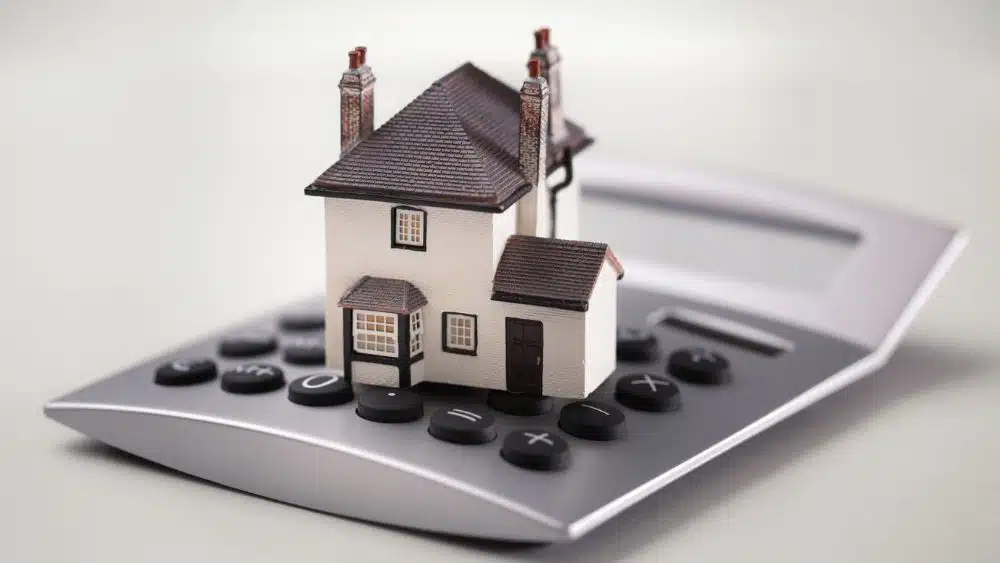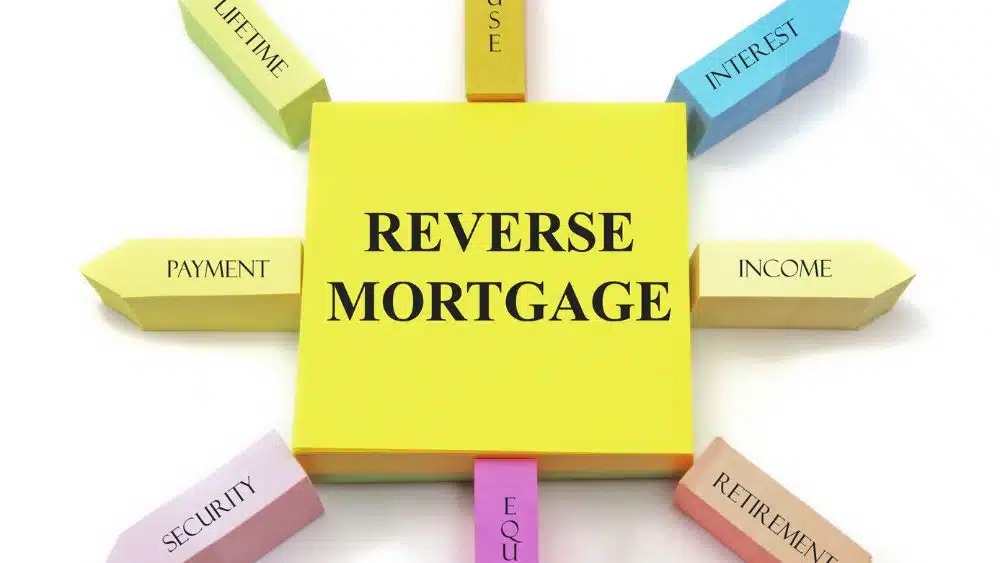8 Expenses and Fees Homeowners Must Pay For to Secure Their Loan

Your principal loan, compounding interest, an endless list of fees and charges – if you’ve taken out a loan before, you’ll know that the convenience of borrowing money comes at a steep premium. How much will a reverse mortgage cost you?
Reverse mortgages may be an enticing loan option for seniors who are homeowners disinterested in moving out of their properties with a substantial amount of home equity in their names. You can keep your home intact, you don’t have to pay back a single penny until you sell, move out, or pass away and you have a windfall of cash to use for your everyday living.
In 2021, over 49,200 reverse mortgages were taken out while that number increased to 64,489 in 2022, the National Reverse Mortgage Lenders Association estimates.
But here’s the catch: Reverse mortgages can be more costly to senior homeowners compared to your other options like refinancing your mortgage, or setting up a home equity line of credit.
What is a Reverse Mortgage?
Reverse mortgages are a type of financing available to seniors who are 62 and older with a substantial amount of home equity to tap into. While homeowners pay down a traditional home loan in monthly installments to accumulate home equity, a reverse mortgage is the opposite: instead of making monthly payments to pay down your mortgage, your lender will pay you a sum of cash that’s taken from your home equity.
You can receive your funds in a handful of different ways, including a lump sum, monthly payments, or a revolving line of credit. This kind of financing is supposed to help seniors with dwindling retirements savings make use of their home equity to pay for daily living expenses.
You won’t have to repay a penny of your reverse mortgage until you sell, move out or pass away.
These are complicated loans to set up, with plenty of moving parts when it comes to fees and expenses. Getting a firm grasp on how much a reverse mortgage will cost you is an important step in your financing journey.
Common Reverse Mortgage Fees
If you’re considering taking out a reverse mortgage to add some breathing room to your budget, here’s an in-depth look at the various fees and charges you’ll incur to set up and maintain this loan.
It’s worth noting that the costs of a reverse mortgage can be paid for by the proceeds from your loan. You won’t have to pay for any of the expenses below out of pocket, but that also means these costs will decrease the total amount of home equity available to you.
Loan Origination Fees
First up is loan origination fees, which homeowners will come across anytime your lender needs to set up and process your home loan application, including traditional mortgages and reverse mortgage submissions.
These charges include everything involved in setting up your reverse mortgage, from preparing your application and conducting the underwrite, to processing your funding at closing.
Your lender can charge you the greater of $2,500 or 2 percent of the first $200,000 of your home’s value plus 1 percent of the amount over $200,000, according to the U.S. Department of Housing and Urban Development. Origination fees are capped at $6,000.
Upfront Mortgage Insurance Premium
Just like lenders have a mandatory clause insisting homebuyers must have mortgage insurance if they have a down payment of less than 20 percent, reverse mortgage applicants must also pay for upfront mortgage insurance premiums (UFMIP). This is a fee that’s charged at closing and equals about 2 percent of your home’s total appraised value.
This is an initial cost at closing, but you’ll need to account for ongoing mortgage insurance premiums, too.
Annual Mortgage Insurance Premiums
Once your reverse mortgage is approved and your funds are issued, you’ll need to maintain your account with annual mortgage insurance premiums. This is a cost of 0.5 percent based on the total amount borrowed.
With most reverse mortgages, the total amount you can borrow is up to 50 percent of the equity you’ve saved up in your home, so this annual premium will be much lower than upfront mortgage insurance costs.
Whether you’re shopping for a traditional mortgage or a reverse mortgage, this insurance is invaluable to you and your lender. Combined, the UFMIP and the annual MIP costs protect you if your reverse mortgage ends up exceeding the amount of equity that’s available to you. This can happen if loan charges or maintenance and repair costs overrun, for example.
This insurance may come into play, protecting your heirs from being liable to pay the difference if you pass away and your home equity doesn’t cover your total reverse mortgage costs.
Accumulating Interest
On top of your loan origination fees and mortgage insurance premiums is interest, which is the money your lender makes from helping you to borrow cash.
While you aren’t paying a penny until you move out, sell or pass away, this interest will keep accruing, chipping away at the value of your home equity. Just like with traditional loans, reverse mortgages can have variable or fixed interest rates, depending on your preferences.
Make sure you’re securing the lowest interest rate available to you to spare as much of your home equity as you can.
One-Time Mortgage Counseling Session
Did you know you must pay for and complete a mandatory counseling session before proceeding with a reverse mortgage application?
Homeowners must complete an HUD-approved 90-minute financial counseling session to help you understand what you’re committing to with a reverse mortgage, including the implications this kind of loan may have on you and your loved ones.
This is a $125 cost. About 41 percent of homeowners who complete their counseling go on to apply for a reverse mortgage, according to federal government stats.
Servicing Fees
Another recurring cost you’ll need to account for are servicing fees, which are paid to your lender to cover costs, such as sending you account statements, issuing your loan proceeds, and making sure you’re meeting the various loan requirements over the lifetime of your reverse mortgage.
This includes record-keeping of you staying on top of property taxes and homeowner’s insurance premiums. The federal government says lenders can charge you a monthly servicing fee of no more than $30.
When your loan closes, your lender will set aside the servicing fee charge, deducting these costs from your available funds. Every month, the servicing fee is also added to your loan balance.
Third Party Charges
You – and your home – will have to clear a few more hurdles before getting approved for your reverse mortgage loan. Below is a list of closing costs you’ll have to pay for before securing your financing. All in, these closing cost expenses can add up to thousands of dollars that your financing can cover. They typically accumulate to 2 to 5 percent of your total loan amount.
Property Appraisal
A property appraisal is done to establish your home’s current market value. A third-party appraiser will evaluate your home’s size, features and condition, along with how it stacks up to homes priced similarly in the community. This fee will vary depending on where you live in the country and the size of your home.
Home Inspection
One of the stipulations for securing a reverse mortgage is to keep your property in good condition. It is, after all, your lender’s only leverage in getting your loan repaid so it’s in their best interests that you keep your home in great shape.
Your lender will hire a home inspector to check on the nuts and bolts of your home to make sure it’s in running order. If your house doesn’t meet the required property standards, they’ll insist on specific repairs or renovations that must be made before you can qualify for a reverse mortgage.
Flood Certification and Property Surveying
If you’re in a state that’s prone to flooding, you’ll need to pay for a flood certification report and, potentially, ongoing flood insurance. During your property evaluation, your lender may insist on a survey, too. These are designed to determine the clear-cut boundaries of your property.
Title Search and Title Insurance
Just like when you secured your home loan to buy your home years ago, you’ll need to pay for a title search and title insurance to get the green light on your reverse mortgage. A title search confirms that you own your property free and clear, without any ownership disputes, unpaid taxes, or outstanding lawsuits.
Once this examination is complete, your lender will expect you to buy an owner’s and a lender’s title insurance policy. These policies stay in effect until you sell your property, protect both parties in case of “defects in title,” and cover all court costs and related fees should something go awry.
Credit Report
Just like when you apply for a credit card or personal loan, your lender will check your credit history to make sure you’re a responsible borrower. Count on the lender passing along the expense to pull your credit report from the various bureaus. If more than one borrower is on the loan application, double this cost.
Property Charges
After you’re approved for your reverse mortgage and you’ve received your funding, you need to stay on top of ongoing property charges, including property taxes, insurance, maintenance and repair costs.
This is another eligibility requirement homeowners must meet – and adhere to – to keep their reverse mortgage intact. Ideally, you have savings on hand to pay for these routine costs, but you can also siphon off funds from your reverse mortgage to manage these expenses.

What Can I Use My Reverse Mortgage For?
In a nutshell, reverse mortgages are designed to help seniors who may not have retirement funds or savings gain access into their home equity without selling their property. You’re using your home equity to cover daily expenses, bills and healthcare costs, or to pay for major home repairs, medical expenses, and other big ticket items.
Ultimately, the funds should be saved for immediate and pressing financial needs, such as paying off your existing debts, according to the National Council on Aging. You should not be paying for this pricy way to use your home equity for expenses like travel, leisure or non-essential purchases.
Things to Consider Before You Get a Reverse Mortgage
Expenses aside, choosing to dip into your home equity with a reverse mortgage is a big financial decision you’ll need to make after careful planning.
You’ll need to ask yourself the following:
- How a reverse mortgage could affect you and your family. You may want to leave your spouse or children a sizeable inheritance when you pass away. This preference alone may steer you away from a reverse mortgage.
- How a reverse mortgage may burden your heirs. Before you sign up to a reverse mortgage, check to make sure it includes a “non-recourse” clause. Most conventional reverse mortgages have this clause – it means that you, or your estate, can’t owe more than the value of your home when the loan becomes due and the home is sold. This is another reason why mortgage insurance is worth maintaining.
- How long you plan to stay in your home. Keep in mind, the costs and associated fees for reverse mortgages keep accumulating the longer you stay in your home. If you get a reverse mortgage immediately at age 62, you’ll need to keep a tight budget to make sure you don’t run out of funds over the years.
- What are your other options. In some cases, you may not be eligible for a reverse mortgage or the lengthy list of costs may put you off altogether. Either way, you have other options on the table, including home equity loans and home equity lines of credit, which also let you dip into your home equity to make ends meet. You can also look into other avenues like refinancing your mortgage, downsizing for a more affordable property, or lowering your expenses through selling your car or sticking to a leaner budget.
You have a three-day right to cancel your reverse mortgage, according to the Consumer Financial Protection Bureau. This means you have three business days after your reverse mortgage closes to cancel the deal for any reason, without incurring any penalties at all. This is also known as your right of “rescission.”
To cancel, you’ll need to notify your lender in writing within this three-day timeframe. After you cancel, your lender has 20 business days to return any money you’ve paid for the financing of your loan.
Bottom line
A reverse mortgage can be a great financial tool to help seniors with little savings and low cash flow make ends meet with their monthly expenses. You won’t have to repay a penny until you move out, sell your property or pass away, but with this convenience comes a number of costs that eat into your hard-earned home equity.
While these expenses can be rolled into your total loan amount, think carefully about whether these costs are worth it. Between closing costs, servicing fees and insurance premiums, the expense may be too much for some while for other households it may be a small price to pay to receive a stable source of income for retirement.
Talk to a financial advisor about whether a reverse mortgages makes sense for you, and make sure you shop around to compare reverse mortgage lenders and their interest rates.

Carmen Chai is an award-winning Canadian journalist who has lived and reported from major cities such as Vancouver, Toronto, London and Paris. For NewHomeSource, Carmen covers a variety of topics, including insurance, mortgages, and more.
 Best Suburbs Surrounding Savannah, Georgia
Best Suburbs Surrounding Savannah, Georgia